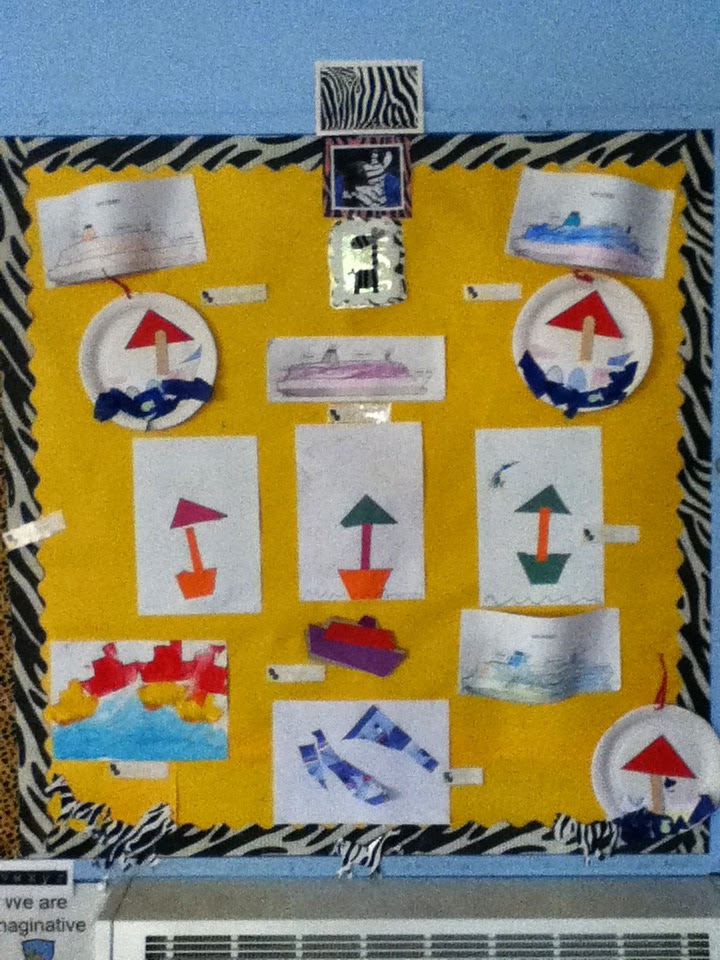Over on the starboard bound side of the classroom, children were able to use various art and crafts activities across the week were completed. Painting, sticking, colouring, making and playdough models.
PHOTO OF MISS JOAN'S FERRY WITH CARS
Description of the boat activity
PHOTO OF THE BOOK AREA
Description of the books
EYFS Links
The role play and small world area both inside the classroom and out in the garden area have been utilised fully this week. As each child explores one of these areas on their own they happily engage with the resources that they are interested in and some even recall past experiences. As the child is playing another child may join them at the table/in the boat and for a while and play alongside each other. As a children develops, both children begin to playing together, cooperatively, extending and elaborating play ideas.
Play is how children learn and is a vital part of child development. All children play, but do so in different ways and at different ages. Play occurs in stages that reflect where the child is currently at, this can depending on the child's social experiences, developmentally where they are at and emotionally ready to engage in different types of play. Each stage of play gives a rough estimation of when this occurs, however as every child is unique, a child may reach a stage before or after others in their age group as they will develop at different rates.
Observant
Infants engage in what’s called “onlooker” or “observant” play up to about 12 months of age. They prefer to sit on your lap and watch other children at play, rather than engage in the play themselves. Infants are fascinated by those around them, and learn who they can rely on to feed, entertain and soothe them by observing.
Solitary
Around the age of 12 months, children begin focusing on learning about and engaging in the world through their senses. Solitary play, which occurs when a child plays alone even when around other children, allows children to explore the world by touching, tasting and grabbing at toys, people and objects. Children discover relationships between their bodies and the environment and learn about cause and effect through solitary play.
Parallel
Around the age of 2 to 3 years, children become more aware of the people in their world, and move from solitary play to parallel play. As they play independently with toys, they start to see themselves as part of a social group, yet still remain egocentric in their thinking. Children at this stage enjoy playing next to other children with the same game or activity, but they may not interact or play together. For example, two toddlers may play with building blocks at the same time, but they typically don't talk about what they're doing or build a project together. Instead they work on building their own structure separate from each other.
Associative
Three-year-olds develop more interest in their peers and have more skills to interact successfully with other than they did at 2 years of age. At this point, most children will engage in associative play. While children at this stage may not work together at the same game, they like to watch and imitate those around them. For example, two children at this stage may use the same clothes to play dress up, and they may discuss what they’re doing, but they don’t play together to create a single game or imaginative narrative. One may mention that she is going to wear the pink dress, but her words are more of a monologue than a dialogue.
Cooperative
As children turn four and five, they begin to form friendships as they enter the stage of cooperative play. At this stage children finally begin talking and working together during play. For example, the two towers that toddlers build independently during parallel play become a single tower during cooperative play. The dress up acted out independently during associative play becomes a dramatic play story acted out together. Children at this stage of development learn to compromise and will seek help from adults to resolve conflicts. They are able to play elaborate games with rules, and can enjoy organized sports or board games.

No comments:
Post a Comment